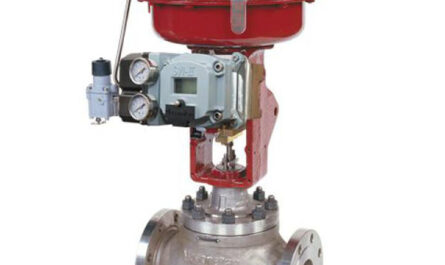AC Generator Excitation Fundamentals
All modern synchronous generators require an excitation system to produce electric power by electromagnetic induction. The excitation system provides direct current (DC) power to the generator’s field windings, creating a magnetic field. As the rotor spins inside the stator, this magnetic field cuts across the stator windings, inducing an alternating current (AC) that can be tapped and distributed as electric power. Proper control of the generator’s field current, or excitation, is critical for power system stability and operation.
Automatic Voltage Regulator Components
The automatic voltage regulator (AVR) is the main component of an excitation system. The AVR senses the generator’s output voltage and compares it to a setpoint reference voltage. It then adjusts the generator field current as needed via a rotary amplifier or static excitation system to maintain the desired voltage level. Feedback sensing and error amplification are essential functions of the AVR. Additional components include a power supply to provide DC excitation, protective devices, and controls for automatic or manual voltage regulation modes.
Static Excitation Systems
In modern Excitation Systems , the rotary amplifier has been replaced by more advanced static excitation elements using power electronic devices like SCRs, GTOs, or IGBTs. Static excitation provides faster response, better bandwidth and system damping, as well as lower maintenance requirements compared to older rotating exciters. By switching DC pulses to the field windings, static excitation can achieve faster adjustments to generator reactive power output and help stabilize the power system during disturbances. Microprocessor controls have also been incorporated into excitation systems for advanced functions.
Power System Stability Factors
The stability of the interconnected power system relies on synchronized operation of all generators within a narrow frequency band. Transient stability is concerned with the ability of the system to maintain synchronism after large disturbances like faults and line trips. Proper generator excitation control is crucial here, as it determines the ability to supply or absorb reactive power and damping. Following a disturbance, transient stability involves properly restoring generator voltage and reactive power support on a timescale of seconds. Steady-state stability relates to maintaining equilibrium after lesser disturbances, and is affected by both AVR control settings and power system strength.
Transients Following Faults
During a fault on the transmission system, the excitation system must rapidly assist in damping out transient oscillations. As fault currents cause generator rotor accelerations, the excitation must provide proportionate field current increases to support transient swings within stable limits. Immediately after fault clearance, a fast restoring of reactive power is needed from the excitation system to help the generator reactive power swiftly recover and support voltage. The generator’s transient and sub-transient reactances play a key role in determining the required response speed from the excitation system. Dynamic simulation tools help optimize protection and excitation control settings.
Frequency Response Requirements
Generator governors traditionally controlled real power response during normal frequency regulation conditions. However, with greater variable renewable resource integration, more capabilities are expected of excit systems as well. Low inertia levels on some power systems require excitation response to frequency deviations on a sub-second timescale for both arresting frequency changes and recovering steady-state frequency faster after disturbances. Future excitation control schemes may provide both real and reactive power response based on system frequency signals, coordinated with new generator governor functions, to support wider system balancing. This is especially critical for islanded “microgrid” power system applications.
Exciter Modeling for Operational Planning
Accurately representing excitation system performance is essential for power system operational studies and planning assessments of generation adequacy, stability margins, and voltagecollapse limits. Simplified models like IEEE DC1A are often appropriate for basic steady-state and transient stability analyses. However, detailed modeling reflecting actual manufacturers’ controls and component parameters is recommended where fast transients govern stability, such as following large disturbances or in weak grid conditions. Dynamic simulation models used in real-time stability applications should capture specific excitation limiting functions, saturation characteristics, and time delays to provide predictive analysis results matching actual plant behavior. Continuous uprating and refinements to excitation system models using field tests improves confidence in operational planning assessments.
In summary, automatic voltage regulation and closely coordinated generator excitation control remain cornerstones of modern power system operations and safety. Continued advancement of excitation system components and control capabilities supports grid reliability requirements in ever-changing operating conditions and generation mixes. Properly representing these systems in tools like transient stability simulations promotes optimal protection decisions and enables reliable integration of new infrastructure and renewable technologies.
*Note:
1.Source: Coherent Market Insights, Public sources, Desk research
2.We have leveraged AI tools to mine information and compile it



